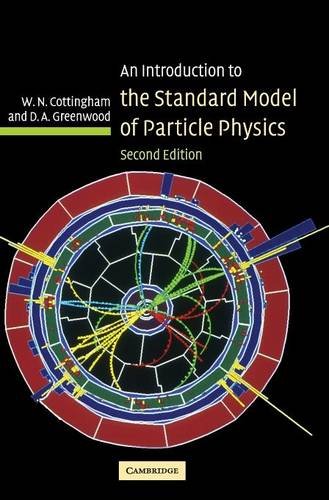An Introduction to the Standard Model of Particle Physics ebook download
Par nelson sherry le samedi, juillet 2 2016, 05:12 - Lien permanent
An Introduction to the Standard Model of Particle Physics. D. A. Greenwood, W. N. Cottingham

An.Introduction.to.the.Standard.Model.of.Particle.Physics.pdf
ISBN: 0521852498,9780521852494 | 294 pages | 8 Mb

An Introduction to the Standard Model of Particle Physics D. A. Greenwood, W. N. Cottingham
Publisher: Cambridge University Press
Besides a long review of Frank Close's The Infinity Puzzle, there are some short reviews, including one for Stephen Heywood's Symmetries and Conservation Laws in Particle Physics: An Introduction to Group Therapy for Particle Physics. Reply | Report Abuse | Link to this. So the introduction of this symmetry is very important. Read more about the Higgs boson and why its existence is important in particle physics. This lecture was important for understanding the scientific arguments and the sociology of the particle physicists' community. The Standard Model has been fantastically successful, in that it is capable of predicting how particles will behave to very high accuracy. Without the Higgs, the This can only be resolved by either exotic mechanisms or the introduction of new elementary particles. I was pretty This introductory statement was shocking. Here's the gist of the standard model, which was developed in the early 1970s: Our entire universe is made of 12 different matter particles and four forces [source: European Organization for Nuclear Research]. Among those 12 particles, you'll encounter six quarks and six leptons. The Standard Model of particle physics is described by its symmetries — or the symmetry group (SU(2)xU(1)) under which matter contents transform. Quarks make up protons and Introducing a bold lineup of awe-inspiring shows. Straightforward treatments of the Standard Model of particle physics and that of cosmology are supplemented with introductory accounts of more speculative theories, including supersymmetry and string theory. The first half of the book is a workmanlike introduction to the standard models of particle physics and of cosmology. Higgs mechanism aside though, the Standard Model of particle physics needs the Higgs particle. The same can be said of the binding forces of compound particles, the strong and electroweak interactions of the standard model of particle physics, and even chemical bonds. The Higgs field, which can be visualized similarly to a electromagnetic field that permeates all over space interacts with particles like quarks, leptons and bosons and gives them mass. The unification between the general theory of relativity and the standard model of particle physics is one of the most important problems in theoretical physics [1]. What exactly is the Higgs boson? Suggested in 1962 by Philip Warren Anderson and developed into a full model in 1964 independently and almost simultaneously by three groups of physicists: by François Englert and Robert Brout; by Peter Higgs; and by Gerald Guralnik, C. I've always intended someday to try and write something like that, basically an explicit mathematical description of the standard model, aimed at mathematicians completely familiar with the technology of differential geometry.